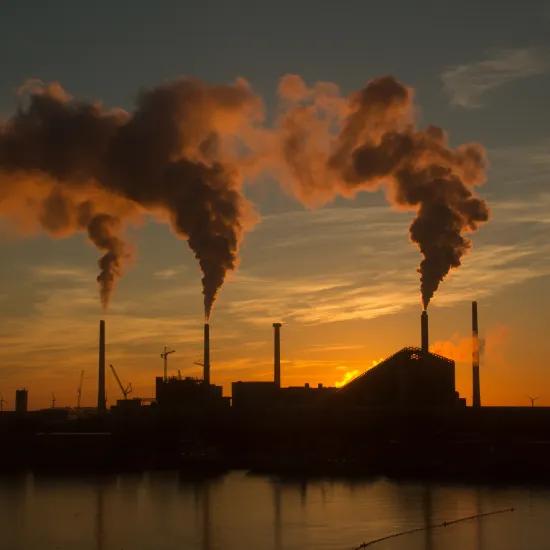Digital tools and strategy for extended lifetime and profitability of offshore wind farms
Wind farms must deliver output power following the needs of grid operators, as electricity generation has to match demand in real time. This implies producing less power than available. Optimally matching supply to demand and the impact of these actions on the equipment are complex, while insights are lacking. The European project WILLOW aims to achieve an integrated system that will provide a health aware curtailment strategy to the offshore wind farm operators.
As wind energy gains ground on the energy market, wind farms will play an increasingly important role in the stability of the electric system. Nowadays, wind farms have to deliver commanded output power following the needs of grid operators, as electricity generation has to match demand in real time, which implies producing less power than available. Today this is done either by shutting down a few turbines and letting others produce maximum power or by down-regulating each turbine by the same amount.
Although these strategies may negatively affect the fatigue life of the turbine, the optimisation of these decision-making schemes is extremely complex. Hence there is a need to better understand and include many factors, such as component degradation, the particular complexity of grid integration or specific offshore issues, such as corrosion or the additional loads from waves, tides and currents.
Introducing WILLOW
To meet these needs, the HORIZON project WILLOW - “Wholistic and Integrated Digital Tools for Extended Lifetime and Profitability of Offshore Wind Farms” – was launched in 2023. This project aims to achieve an integrated system that will provide a health aware curtailment strategy to the offshore wind farm operators.
Physical models and data-driven models (AI/ML) will be used to assist decision-making and planning of wind turbine operation and maintenance (O&M) activities, considering factors such as component degradation, the particular complexity of grid integration, or specific offshore issues, such as corrosion or the additional loads from waves, tides and currents.
The WILLOW integrated system will provide an open-source, data-driven smart curtailment solution to the wind farm operators with the basis of an integrated wind farm control system looking for a trade-off between the power production and the lifetime consumption.
To address existing challenges, WILLOW will take action in three different areas:
- Novel structural health monitoring, combined with drone-based inspections, focused on pitting corrosion, coating degradation and load damages
- Data-driven prognosis tools, by combining SCADA and SHM data, for wind farm-wide corrosion and lifetime consumption
- Decision-making support tools for wind farm operators or smart power dispatch in curtailed conditions in O & M scheduling
To develop these novel solutions, the project consortium will work with real data from two wind farms, and it will have the opportunity to test the new coatings and monitoring solutions in two offshore test benches.
WILLOW is is fully funded by the European Union, with 12 partners across Europe, located in Belgium, Germany, the Netherlands, Norway and Spain.
Expected added value
- Lower maintenance costs – A reduction of 50% on the inspection costs
- Optimised design & operation life - 20% of lifetime extension in wind farms designed with 25 years of lifetime
- Environmental impact - Expectation of reducing noise pollution by 4%.
- Levelised cost of energy (LCOE) - Up to 10% reduction of LCOE, between 3.5 and 4.5€/MWh
Sirris’s role
Sirris’s main role in WILLOW is the development of methodologies for continuous monitoring of corrosion and coating degradation on wind turbine foundations, together with partner C-Cube. Innovative methods will be developed based on electrochemical measurements, in combination with measurement of environmental parameters in the submerged, splash, tidal and atmospheric zones, for which measurements will be conducted at the Blue Accelerator offshore test site in Belgium. Based on these measurements we will attempt to develop prognosis models for uniform corrosion and coating degradation together with Flanders Make. Sirris will also pay special attention to pitting corrosion, which is the most dangerous form of corrosion for fatigue-loaded structures.
A proof-of-concept study will be performed in our labs, to learn if pitting of carbon steel in a maritime environment can be detected by using electrochemical frequency modulation. These data will be compared to the results of project partners CEIT and Alerion on the detection of pitting corrosion, by using pulse-echo ultrasounds and thermography. Simulation of cathodic protection (CP) will be included, to evaluate the possibility for the proposed measurement methods to operate on a CP protected structure.
Sirris will also evaluate the possibility to monitor corrosion in the mudline, by means of a field exposure experiment, consisting of a small diameter steel pipe partially buried in the seabed at the Blue Accelerator test site. Not only will this teach us something on the possibility of monitoring, the steel pipes will also provide a unique dataset on mudline corrosion, as there is a large lack of understanding.
If the video is not visible, watch it on youtube
First WILLOW newsletter, now available!
Would you like to follow progress made in the WILLOW project?
Stay tuned and subscribe to the WILLOW newsletter!
The first issue of the WILLOW Newsletter is out now: get acquainted with the project partners and find out what activities were carried out in the first eight months of the project.
This project has received funding from the European Union’s Horizon Europe research and innovation programme under grant agreement 1011122184 .
Views and opinions expressed are however those of the author(s) only and do not necessarily reflect those of the European Union or European Commission. Neither the European Union nor the granting authority can be held responsible for them.





